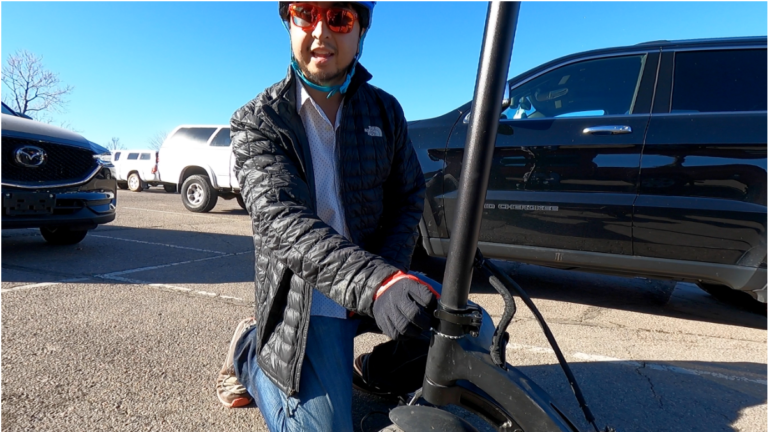We’ve moved! Check out our FULL article here. Summary below.
Purchasing a used electric scooter can be a daunting and potentially risky task. To help ensure a safe and informed purchase, consider the following checklist and tips:
Ultimate Checklist for Buying a Used Electric Scooter:
- Check for Missing Bolts: Inspect the scooter for missing bolts, especially around the motors and tires, as this could affect safety and performance.
- Inspect the Frame: Ensure the frame is secure and hasn’t become loose. Loose frames can lead to vibrations and wire damage.
- Test the Brakes: Check the brakes, especially disc brakes, for any signs of rubbing or squeaking. Verify that all brakes are functional.
- Examine the Stem: Test the stem for creakiness or looseness, as this could indicate the scooter’s previous usage and potential issues.
- Inspect Bearings: Look for corrosion around the bearings, as it can indicate exposure to moisture or saltwater, especially if you live near the ocean.
- Check Bearing Movement: Ensure that the bearings move freely; damaged or jammed bearings may need replacement.
- Verify Tire Pressure: Confirm that the tires have the correct pressure to avoid damage and cracking, which could be caused by low pressure.
- Check Tail Lights: Examine the condition of the tail lights, as they often require replacement. Replacing them may be a bit complex, depending on the scooter’s design.
- Inspect Tire Tread: Evaluate the tire tread’s condition; worn or damaged tires may be challenging to replace if you’re not experienced.
- Examine the Battery: While checking the battery can be challenging, you can ask the seller to fully charge it and verify if it reaches the expected voltage. Note that replacing a battery is a costly endeavor.
- Test the Motors: If it’s a dual motor scooter, ensure that both motors are working correctly by toggling between single and dual motor modes.
- Check the Controller: Although controllers rarely go bad, it’s worth inspecting if a scooter behaves oddly, as this could be due to a faulty controller.
- Inspect the Suspension: Make sure the suspension moves freely and isn’t excessively tight, as stiff suspension may require servicing.
Common Issues to Be Aware of:
- Tires: Changing tires can be complex, and incorrect installation may lead to damage or blowouts. Consider professional assistance if you’re not confident in tire replacement.
- Batteries: Battery issues can be challenging to detect and are costly to replace. Verify the battery’s health by checking its voltage and monitoring range during test rides.
- Bad Motor: Replacing a faulty motor involves disassembling the scooter, which can be intricate. Motors are also expensive, making motor issues a concern.
- Bad Controller: Replacing a controller requires disconnecting and reconnecting numerous wires, which can be tedious. Controllers are also relatively expensive components.
While electric scooters are generally dependable, higher-tier scooters can have more complex issues. Be cautious when purchasing used scooters, especially without thorough inspection. Always ensure the seller’s honesty and assess your ability to address potential issues or cover the cost of professional repairs.
The purchase of a used Kaabo Mantis Pro for $150 taught the importance of careful inspection. Sheared bolts on the split rim were a significant concern that could have led to a dangerous tire blowout. Fortunately, the seller was honest, revealing these issues. By following this guide, you can make a smart and secure used scooter purchase.
Keep reading our FULL article here.
